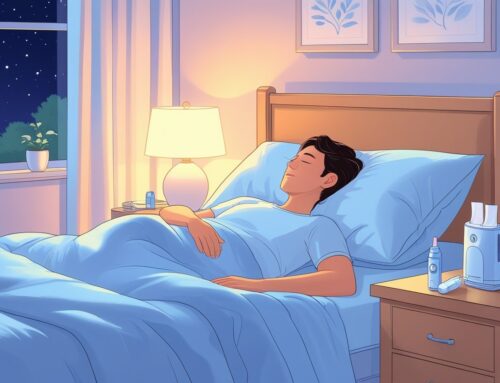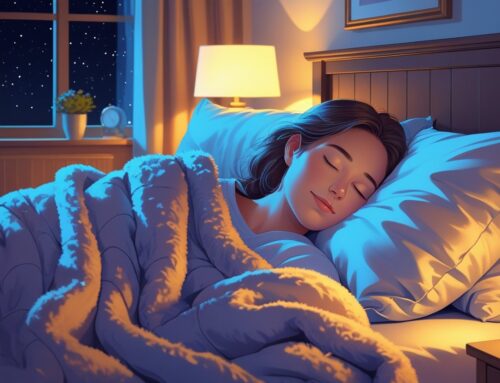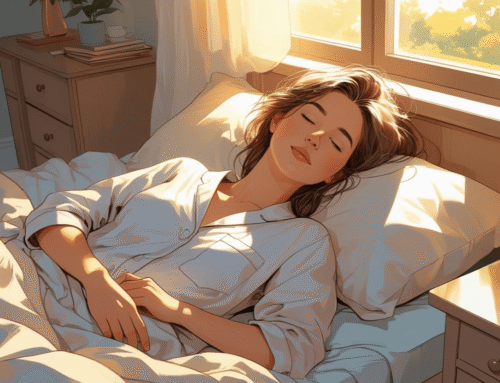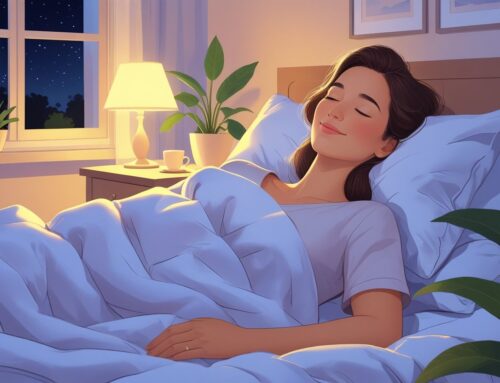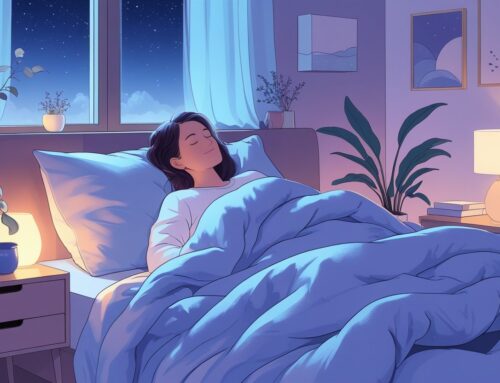Sleeping with scoliosis can be challenging due to the discomfort caused by the spine’s unusual curvature. To get the best rest, people with scoliosis should try sleeping on their back or side on a mattress that’s not too soft or too firm. This helps support the spine properly. Avoid sleeping on your stomach, as it can worsen the condition. Using pillows strategically can help keep the spine in a neutral position and reduce pressure on sensitive areas.
The location and severity of the spinal curve may require individuals to adjust their sleeping position. For example, those who prefer sleeping on their side should lie on the side opposite to the main curve to ease pressure and make breathing easier. Even small changes in bedding and sleeping posture can significantly improve comfort levels.
Understanding how different sleep positions affect scoliosis is crucial for managing symptoms and improving sleep quality. By adopting proper support and sleep habits, people with scoliosis can reduce pain and promote better spinal health in the long run. Consistent use of these techniques can lead to more restful nights and improved overall well-being.
Key Takeaways
- Back and side sleeping provide more favorable spinal support for scoliosis.
- Mattress selection and pillow use contribute significantly to comfort and pain reduction.
- Sleep position adjustment to the curve of the spine enhances breathing and pressure reduction.
- The best mattresses for scoliosis offer a balance of medium-firm support and pressure relief. Hybrids or adjustable airbeds help keep the spine aligned and ease discomfort throughout the night.
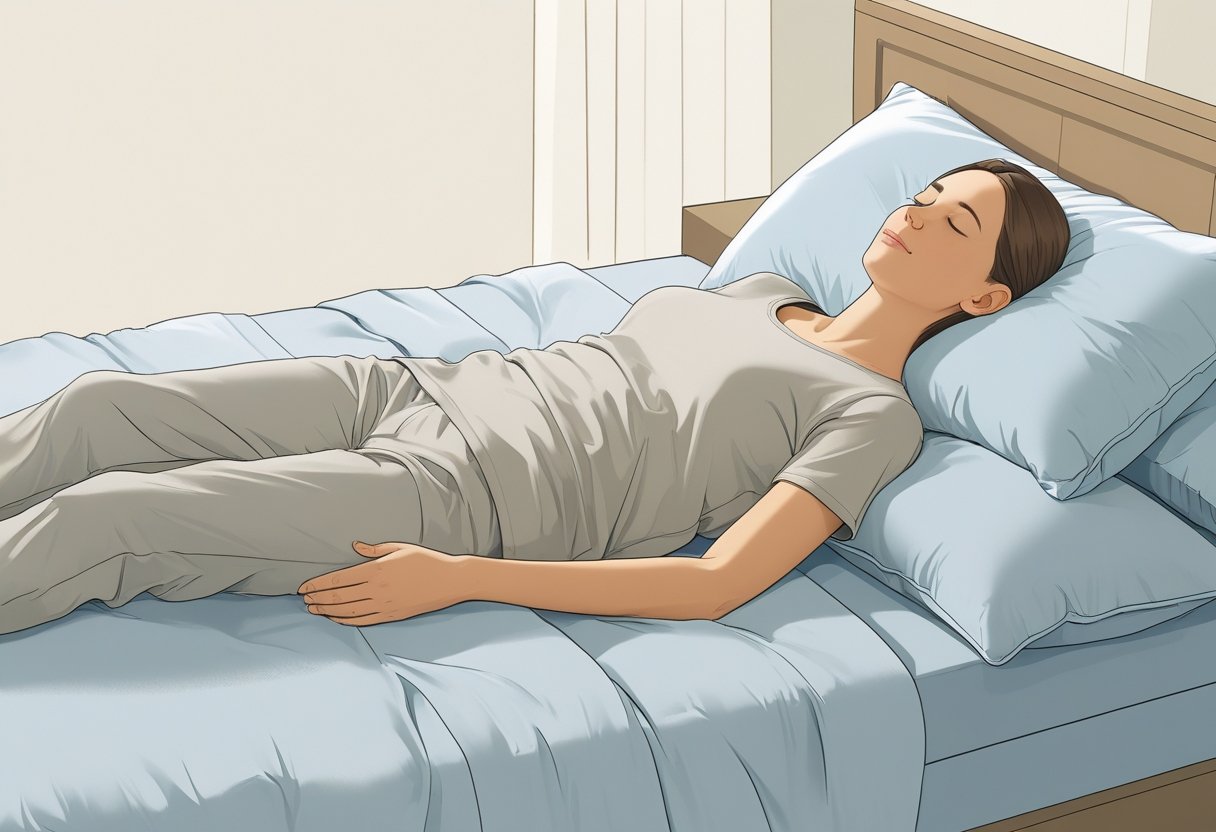
Understanding Scoliosis and Sleep
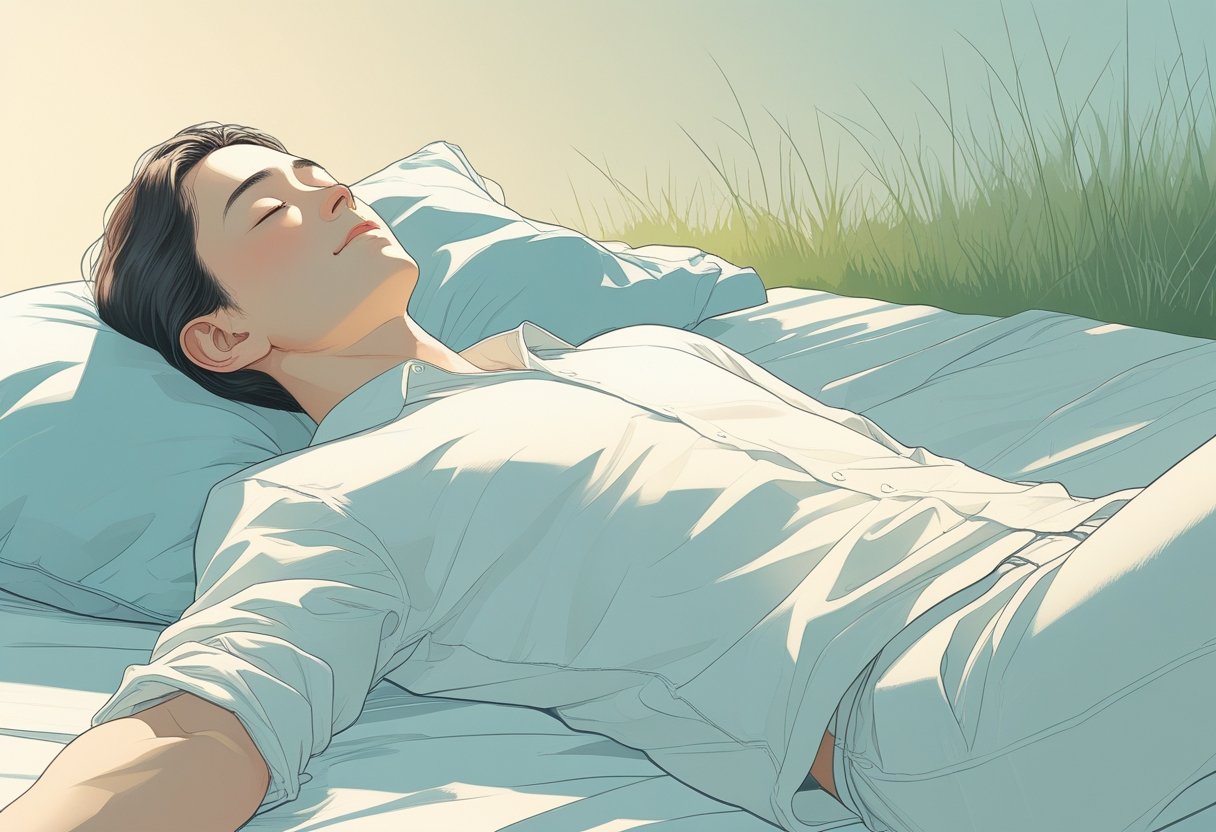
Scoliosis alters the curvature of the spine, which makes it hard to maintain a comfortable position during sleep. The changes in the spine lead to stiffness and pain that disrupt rest. Understanding how scoliosis disrupts sleep aids in selecting positions and supports to enhance sleep quality.
What Is Scoliosis?
Scoliosis is an abnormal curvature of the spine sideways. Scoliosis can occur in any area of the spine, including in the upper back or the lower back, and can range in severity.
However, the curve can distort the ends of the shoulders, hips, or waist. In other cases, it causes the spine to rotate in such a way that the ribcage bulges on one side more than the other. Such an abnormality of the spine leads to muscle tightness and imbalances. Scoliosis can begin in childhood and adolescence, but it has also been known to occur in adults. The treatment may be physical therapy, bracing, or surgery, depending on how the scoliosis develops.
How Scoliosis Impacts the Quality of Sleep
The changing curvature of the spine puts uneven stress on joints and muscles when sleeping. This can result in morning stiffness and pain. Individuals with scoliosis have difficulty remaining comfortable throughout the night.
The curvature can also interfere with the normal alignment of the spine during lying down. Such misalignment can further complicate falling asleep and sleeping. Pain and discomfort are responsible for waking up a number of times at night.
Inadequate sleep brings about daytime fatigue. This can reduce an individual’s overall mood and also complicate the management of scoliosis symptoms.
Normal Sleep Issues With Scoliosis
Scoliosis patients describe difficulty sleeping well. The most frequent complaints are:
- Excruciating back or neck pain during and after sleeping
- Trouble sleeping due to discomfort
- Tossing and turning repeatedly to ease pressure
- Tightness or stiffness upon awakening
Sleeping on the stomach, for instance, aggravates spinal tension. Side sleeping without support from a pillow can add spinal twisting. Back sleeping with some pillow alignments is usually the most stabilizing, supporting alignment of the spine and minimizing muscle tension.
Adjusting sleep position and mattress type are key steps to improving scoliosis sleep quality.
Best Sleeping Positions for Scoliosis
Determining the proper sleeping way with scoliosis is paramount for comfort and pain relief. Having the spine in correct alignment helps alleviate pressure and supports breathing. Applying pillows and selecting firm yet supportive mattresses is also enhancing sleep quality.
Why Sleep Position Matters
Sleeping position has an influence on the way the spine lies during sleep. For a person with scoliosis, incorrect alignment may put additional stress on muscles and joints. This results in more pain and even more severe pain the following day.
A neutral position makes the spine as straight as possible. It minimizes unwanted twisting or bending. This is especially crucial for lumbar scoliosis, in which the lower back curves sideways. Poor positions can worsen the curve or create pressure points.
Good sleep posture also promotes improved breathing. Severe scoliosis has the potential to limit lung space, so chest-opening positions can aid in improving airflow during the night.
Sleeping on Your Back
Sleeping on the back is generally considered the best sleeping position for scoliosis. It allows the spine to rest without extra curves or twists.
To maximize support, it helps to place a small pillow or rolled towel under the lower back. This prevents excessive pressure and maintains the natural lumbar curve. The head pillow must maintain the neck in alignment with the rest of the spine. Steer clear of high or thick pillows that force the head too far forward or lean the head back.
Back sleeping can also be best for individuals having a curve on the side, as it prevents unevenly distributed weight.
Side Sleeping Techniques
Side sleeping comes in second best and can be okay if done in the right manner. Side sleeping alleviates pressure on one side of the back for some individuals suffering from scoliosis. The key rule to follow is to sleep on the opposite side of the largest curve. In case of the largest curve curving to the right, sleeping on the left side is more advisable to promote spinal alignment.
Lying with a firm pillow between the knees will keep the hips in alignment and keep the spine from twisting. Head pillows will fill the gap between the shoulder and neck without flexing the neck. Side sleeping also can open the chest to enhance breathing, which is beneficial for patients having restriction of the lung due to scoliosis.
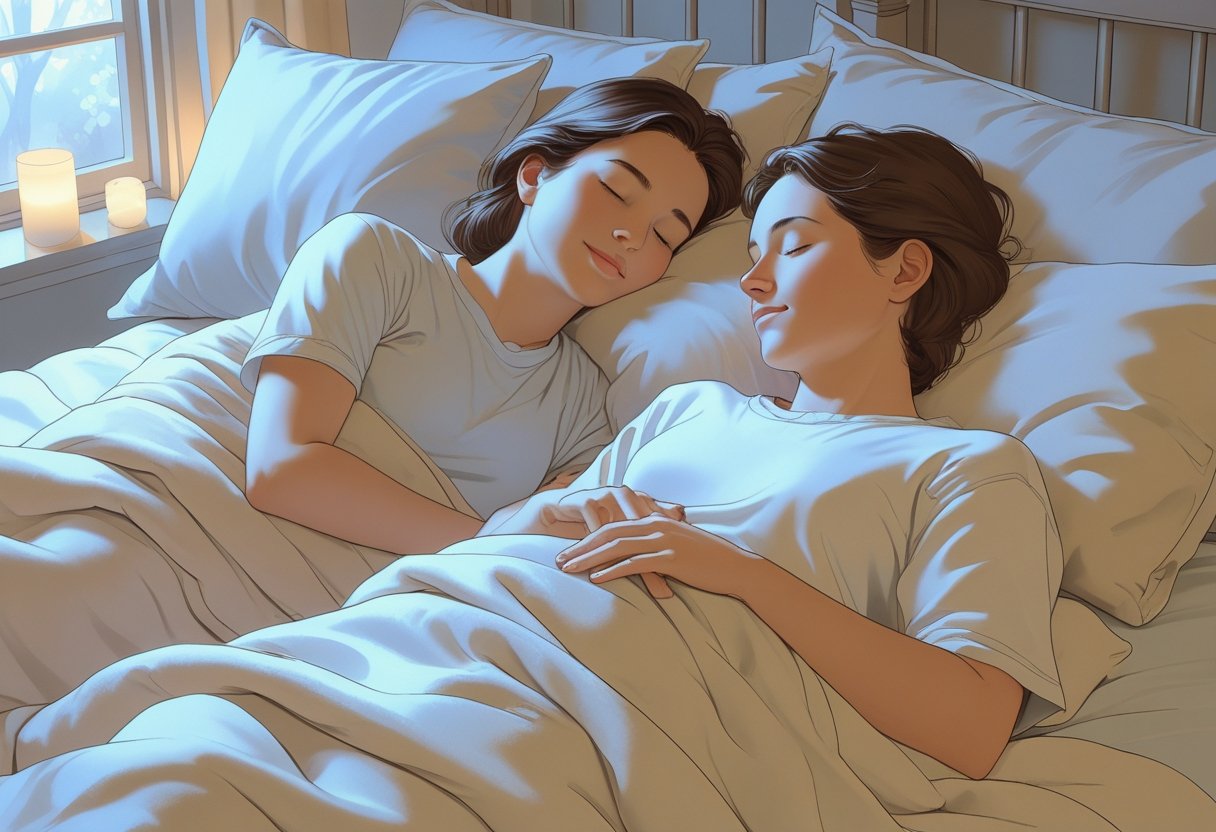
Positions to Avoid While Sleeping
Some sleeping positions can add pressure and misalignment to the spine, exacerbating scoliosis symptoms. Avoiding such sleeping positions avoids pain and prevents further back strain.
Risks of Stomach Sleeping
Sleeping on your stomach is generally considered the least favorable position for people with scoliosis. This sleeping posture can cause your neck to twist sharply, leading to unnatural spinal contortion and potentially worsening back pain. Additionally, it may cause excessive arching of the lower back, putting extra strain on already curved areas of the spine.
Because stomach sleeping doesn’t support the spine’s natural alignment, it can increase discomfort and lead to muscle tension. While placing a pillow under the pelvis might help reduce arching, this sleeping position is typically not recommended without a doctor’s guidance.
It’s important to note that sleeping on your stomach doesn’t cause scoliosis. However, for those who already have the condition, this position can aggravate existing spinal curves, making them more painful and challenging to manage.
How Poor Sleeping Posture Can Worsen Scoliosis
Certain sleeping positions can worsen scoliosis symptoms and potentially accelerate its progression in some people. Poor sleep posture can create uneven pressure on the spine and surrounding tissues, leading to muscle strain and discomfort.
Sleeping on your side without proper support may cause the spine to twist or bend unnaturally. While side sleeping doesn’t cause scoliosis, it’s advisable to alternate sides and use a pillow between the knees to maintain proper hip alignment.
Using an inadequate mattress or too many pillows can negatively impact your sleeping posture. Consistently sleeping in poor alignment may result in discomfort and could aggravate existing spinal issues. It’s important to prioritize proper sleep positioning to minimize potential complications associated with scoliosis.
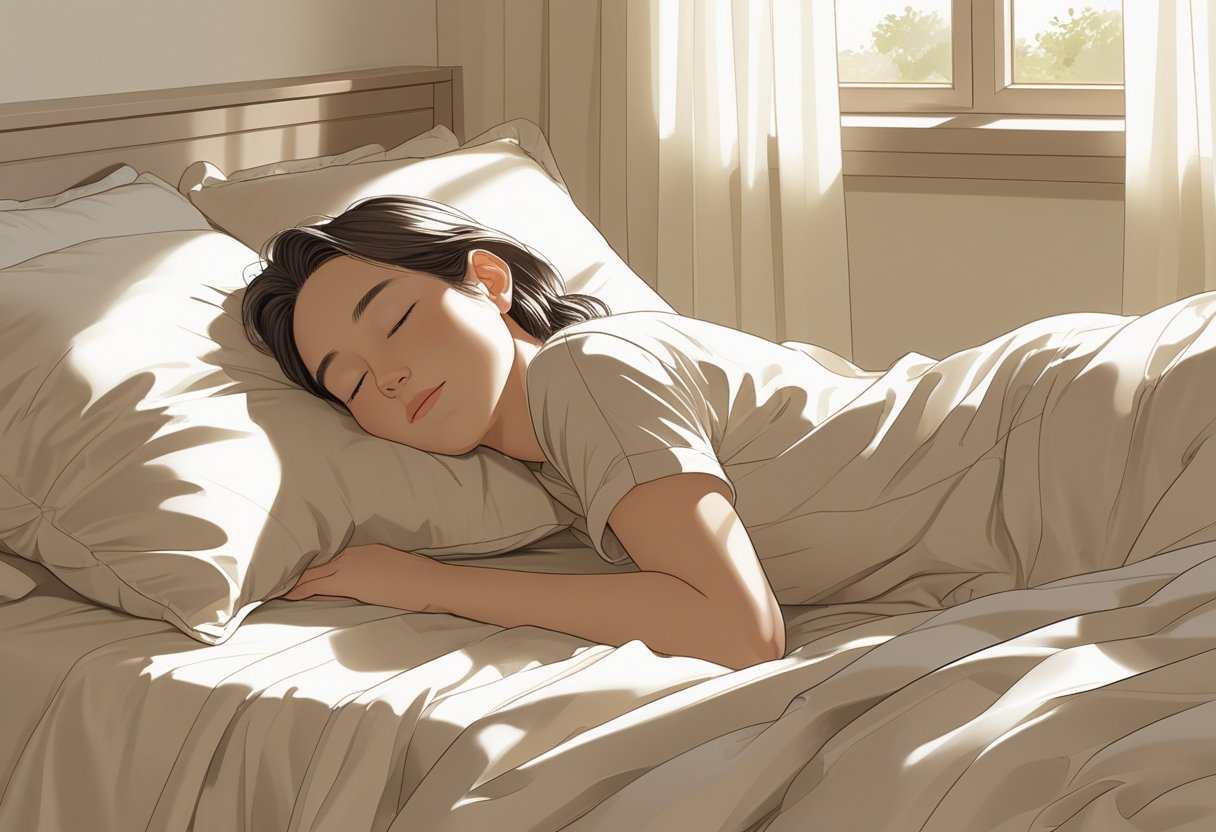
Tailoring Sleep Positions to Scoliosis Types
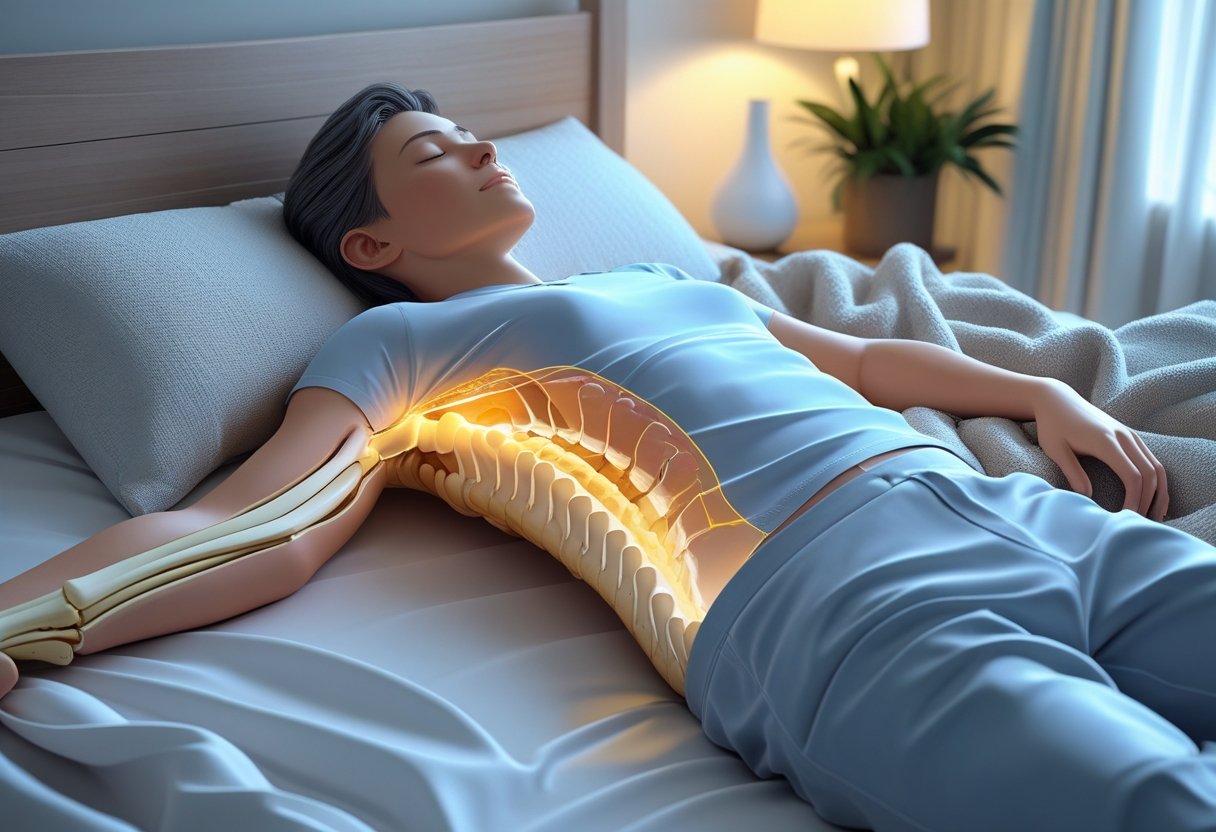
Various forms of scoliosis result in distinct curves and pain, so modifying sleeping positions to correspond to the individual shape of the spine is crucial. The correct position serves to maintain the spine stabilized and may alleviate pain throughout the night.
Sleeping With Lumbar Scoliosis
For scoliosis in the lumbar area, with the curve in the lower back, sleeping on the opposite side of the curve is generally best. This prevents extra pressure on the curved side and aids in proper spinal alignment.
A medium-firm mattress is helpful to provide sufficient support without being too firm. Having a pillow placed under the knees can help alleviate pressure in the lower back and hold the spine in neutral. Back sleeping is also a possibility if a pillow is put under the lower back and knees for additional support. This keeps the lower spine from bowing and maintains its normal curve.
Sleeping With Thoracic and Dextroscoliosis
Thoracic scoliosis is curved in the upper and middle back. Dextroscoliosis, or a curve toward the right side, is a prevalent type of thoracic scoliosis.
Individuals with thoracic or dextroscoliosis tend to get relief by sleeping on the opposite side of the curve. For instance, if the curve curves to the right, sleeping on the left side tends to keep the spine more straight.
Using pillows behind the back or between the knees reduces twisting and keeps the spine better aligned. Back sleeping can also work but requires a supportive mattress and pillows under the shoulders and lower back to maintain posture. Avoid sleeping on the stomach, as this position can worsen spinal twisting and increase discomfort.
Adapting Positions for Early Stage Scoliosis
In early onset scoliosis, the curve of the spine is small, but normal sleep position is still necessary to avoid progression and alleviate pain.
A medium-firm mattress is an excellent spinal support option without pressure points. The majority can comfortably sleep on their side or back, with pillows adjusted to encourage alignment. Side sleepers must place a pillow between their knees to prevent twisting. Back sleepers can employ a thin pillow under the lower back to provide normal curvature.
Scoliosis at the early stage is supportive of normal movement in sleeping positions but should not stomach sleep because it has the potential to add more stress to the spine.
Choosing Pillows and Sleep Accessories
The choice of pillows and sleep assist devices can significantly impact comfort and spinal support for scoliosis sufferers. Optimal choices support alignment, minimize pressure points, and relax muscles. The following section addresses how certain pillow designs and mattress types can assist each other to enhance the quality of sleep.
Benefits of Cervical and Scoliosis Pillows
Cervical pillows are made to accommodate the natural curve of the neck. They prevent the head and spine from being misaligned, which would particularly be a concern for a scoliosis sufferer. Most cervical pillows feature a curved profile that supports the underside of the neck, alleviating strain while sleeping.
Scoliosis pillows are designed to give specific support to the back and lumbar regions. They can be molded into gaps created by the curve of the spine, so it doesn’t exert uneven pressure and pain.
Both kinds are typically constructed with memory foam or other materials that conform to body shape. This individualized support eases muscle tension and keeps the spine in a neutral position through the night.
How to Use Pillows for Support
Positioning pillows properly can enhance sleep position and comfort for scoliosis patients. Side sleepers can place a scoliosis pillow in between the knees to align hips and alleviate lower back pressure.
A cervical pillow under the neck provides support for the natural curve without pushing the head up or down. An extra pillow underneath the shoulders or upper back could provide relief to some.
For back sleepers, a small pillow placed under the knees flattens out the lumbar curve and reduces tension. Pillow height adjustment is necessary to prevent unnatural bending of the neck or spine.
Mattress Issues for Scoliosis
Another important factor for treating scoliosis is the mattress. Without creating pressure points, a medium-firm mattress provides enough support to maintain the spine in its neutral position. Mattresses that conform to the body, like hybrids or memory foam, distribute weight uniformly. They lessen high-pressure areas that can cause scoliosis discomfort or tightness.
Avoid too firm mattresses that resist curved parts or very soft mattresses that cause the spine to bow. Choose a balanced support that relieves pressure and maintains the spine’s alignment. If the mattress is too lumpy or stiff, applying mattress toppers can also improve comfort.
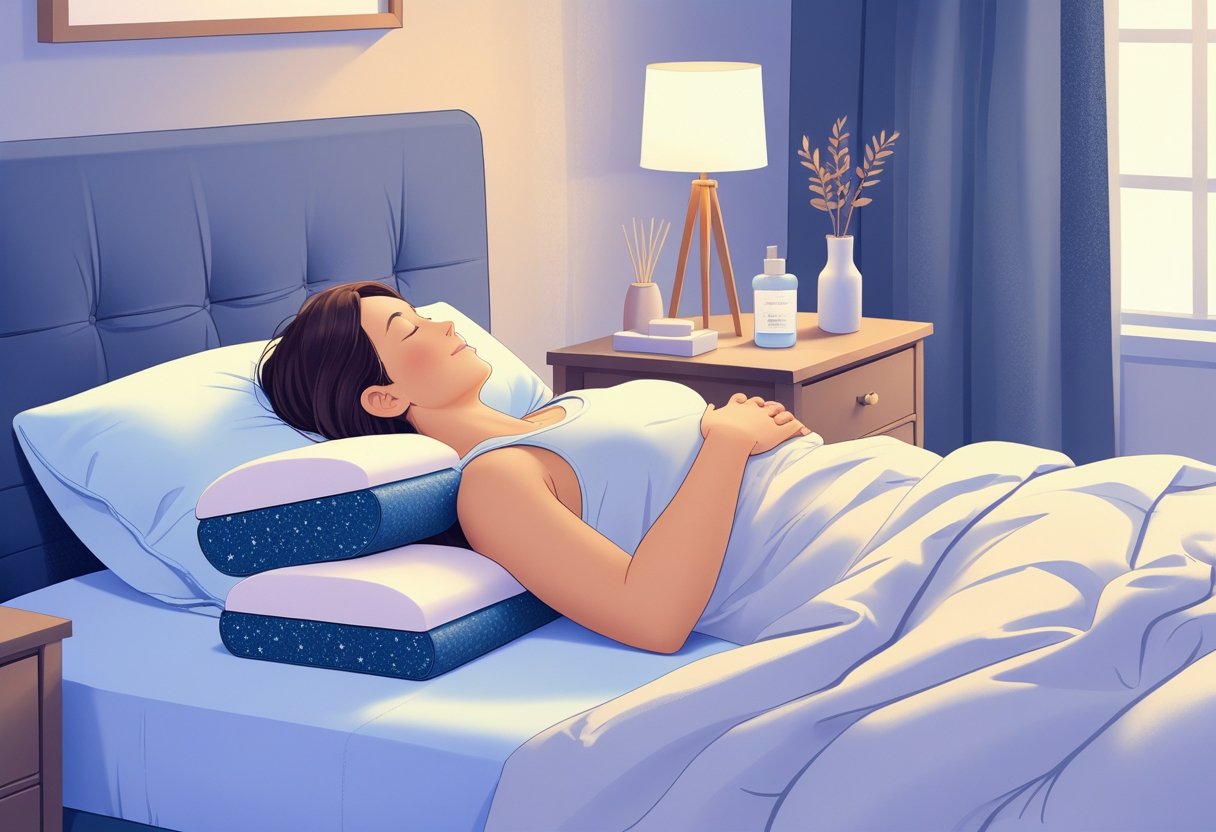
Practical Sleep Tips and Adjustments
Sleeping techniques that are proper can minimize pain and enhance comfort in individuals with scoliosis. The use of appropriate mattress, pillows, and sleeping positions is essential in order to effectively support the spine. Individuals with a scoliosis brace have additional care requirements to ensure comfort and skin health.
Tips for Comfortable Sleep With Scoliosis
Back or side sleeping tends to work best for individuals with scoliosis. Back sleepers can rest a pillow under their knees to decrease pressure in the lower back. Side sleepers can use a pillow between their knees to support hips and spine alignment.
A medium-firm mattress offers the right balance of support and cushioning, helping the spine stay neutral. Avoid sleeping on the stomach, as it can twist the neck and worsen spinal misalignment.
Adjustable pillows, particularly memory foam, can provide individualized neck and head support. Care should be taken that the pillow is neither too high nor too low to preserve spinal alignment. Rolled towels under the shoulder blades and lower back can also put less pressure.
How to Sleep With a Scoliosis Brace
Sleeping in a scoliosis brace demands additional care about comfort and cleanliness. The brace should be dried to avoid irritation or rashes of the skin. Sleeping with a pillow under the legs when sleeping on the back can prevent the brace from cutting into the skin.
Entry and exit from bed while the brace is being worn must be done with caution. Rolling onto the side and then using the arms to push up prevents straining. Following special precautions given by a healthcare professional regarding sleeping position while wearing a brace should be done.
Wearing soft, breathable undershirts under the brace can decrease discomfort. Regular checkup of the fit of the brace ensures that it does not feel too tight while asleep.
When to Get Professional Assistance
If discomfort or pain at night increases regardless of the adjustments, one must seek the advice of a healthcare professional. They can prescribe customized sleeping positions or individual support devices.
Sudden spikes in back pain, numbness, or difficulty breathing call for immediate attention from a medical specialist. A physical therapist or expert might advise exercises or bracing designed to enhance the quality of sleep.
Regular follow-up can monitor the progress of scoliosis and confirm that sleeping strategies continue to be safe and helpful. Professional recommendations can also direct when surgery or other interventions may become necessary.
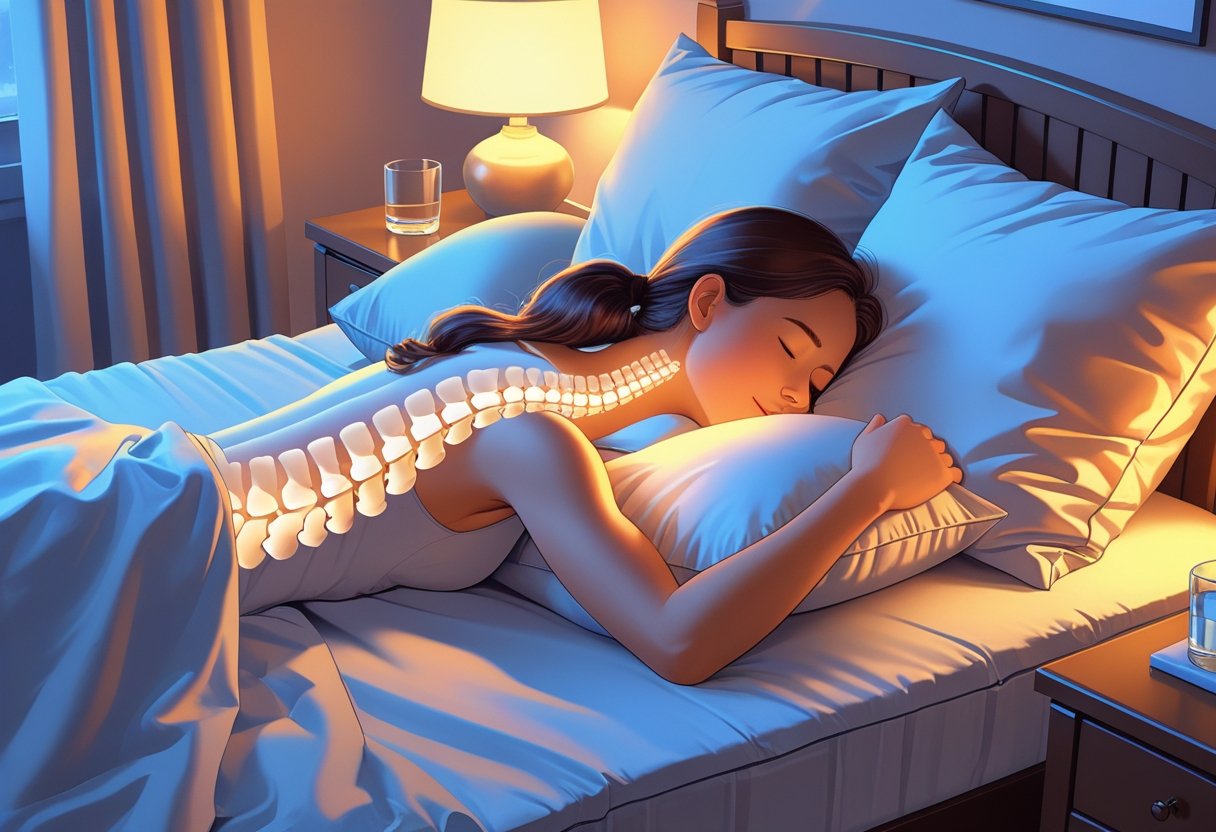
Best Mattresses for Sleeping Comfortably with Scoliosis

Individuals with scoliosis require mattresses that have the perfect balance between pressure relief and support. A mattress that is too soft can result in the spine sinking unevenly, whereas one that is too firm can put pressure on sensitive spots such as the hips or shoulders.
An excellent option is usually in the medium-firm mattresses. These promote a healthy spinal alignment and give enough cushioning to soften out pressure points, especially helpful for people who suffer pain from scoliosis.
Hybrid mattresses, with supportive coils and a foam or latex comfort layer, are a solid choice. The coils stabilize the spine, and the top layers offer light contouring. A good one to consider is the Leesa Sapira Chill Hybrid mattress, which combines responsive support with cooling technology, beneficial for those who require comfort without heat buildup.
What sets the Leesa Sapira Chill Hybrid mattress apart is its advanced zoned support system, which helps keep your spine aligned while cushioning pressure-prone areas. The quilted top has a soft, breathable feel, and the firmness options give you more control over your comfort, especially if your scoliosis symptoms tend to shift over time.
Edge support is another important consideration. A mattress with reinforced edges enables you to use the entire surface without experiencing instability, particularly useful for those who tend to change positions in their sleep.
For even greater flexibility, airbeds that can be adjusted can be useful. These provide the ability for users to adjust firmness levels based on their body sensations every night, providing a personalized method of controlling scoliosis pain.
Frequently Asked Questions
Sleeping comfortably with scoliosis means paying close attention to your position, mattress, and sleep setup. The right pillow and mattress firmness can ease back pain, while braces and spinal curve types call for specific adjustments.

